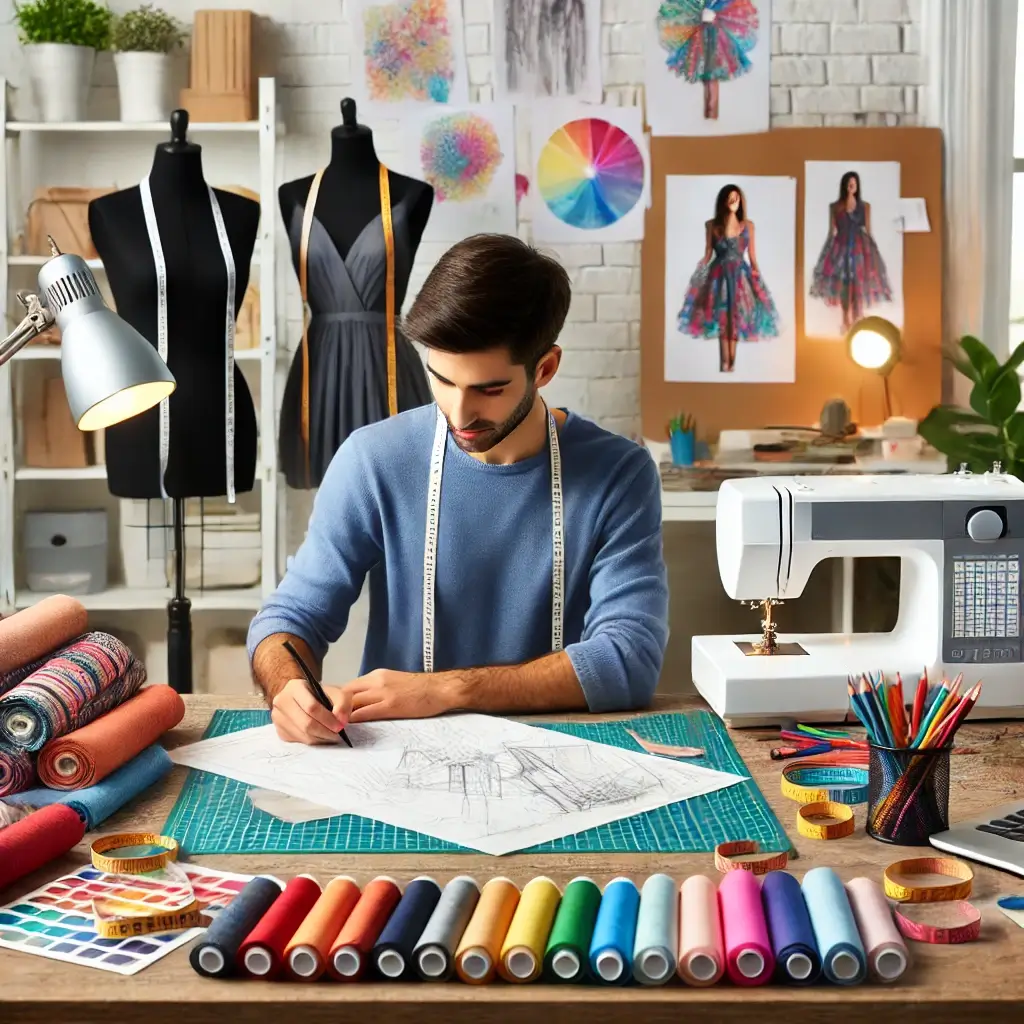Fashion design is an exciting and dynamic career path, offering a unique blend of creativity, artistry, and technical skill. Whether working for established fashion houses, freelancing, or creating their own label, fashion designers shape the way people express themselves through clothing and accessories. This article delves into the diverse career paths of fashion designers and the detailed steps involved in the design process.

Fashion Design Careers: Diverse Paths to Success
Working for an Established Designer or Manufacturer
Designers working for big-name fashion houses or manufacturers typically focus on creating pieces under an established brand. While this route may seem less glamorous than running your own label, it can provide a steady income and opportunities to hone skills and build a reputation.
Creating Your Own Label
Starting your own fashion label offers creative freedom and the potential for high rewards, but it also comes with significant risks. Designers must invest considerable time, money, and effort into building a brand, sourcing materials, and establishing production processes. However, the satisfaction of seeing your designs come to life and being embraced by customers is unparalleled.
Freelance Design Work
Some designers choose to work on a freelance basis, creating collections for multiple clients or lines. Freelancing offers flexibility and the opportunity to work on diverse projects but requires strong networking and the ability to manage multiple tasks simultaneously.
Famous Fashion Designers and Their Journeys
The paths to success in fashion design are as varied as the designers themselves. Here are a few examples of prominent designers and how they made their mark in the industry:
- Ralph Lauren: Ralph Lauren began his career with a modest tie collection sold to Bloomingdale’s. From there, he went on to build a global brand synonymous with classic American style.
- Helmut Lang: Lang opened his own store after he couldn’t find the perfect T-shirt. His minimalist designs quickly garnered a loyal following and set trends in fashion.
- Michael Kors: Kors built his reputation by selling designs at a New York City boutique. His collections have grown to represent luxury fashion accessible to the modern woman.
- Nicolas Ghesquière: Currently the creative director for Louis Vuitton, Ghesquière’s career began as an assistant at Jean-Paul Gaultier. He later became the creative director of Balenciaga before joining LVMH.
Specializations in Fashion Design
Fashion designers may specialize in different areas of fashion, each with its own set of design principles and challenges. Some of the most common specialties include:
Apparel Designers
Apparel designers focus on creating clothing, from everyday wear to high fashion collections. They may work in specific sectors like men’s, women’s, or children’s fashion, or even niche categories like activewear or sustainable fashion.
Accessory Designers
Accessory designers focus on creating fashion items like handbags, belts, scarves, jewelry, and eyewear. These pieces complement the overall wardrobe and are often the highlight of a collection. Alexis Bittar is a well-known designer in the jewelry space, creating pieces that blend art and fashion.
Footwear Designers
Footwear designers create shoes and boots, often focusing on combining comfort with high-fashion aesthetics. Some designers work exclusively in footwear, while others may design across multiple categories of fashion.
The Fashion Design Process: From Idea to Market
The journey from concept to finished collection in fashion design is a lengthy and complex process, often taking between 18 to 24 months. Here’s a breakdown of the typical steps involved:
- Research and Trend Forecasting: Designers begin by researching current trends and forecasting what will be popular in upcoming seasons. They may rely on trend forecasting services or conduct their own research to predict colors, styles, and fabrics.
- Preliminary Sketching: Once the designer has a clear vision, they create initial sketches. Traditionally, these sketches were done by hand, but now many designers use computer-aided design (CAD) software to visualize their ideas.
- Fabric Selection: Designers attend trade shows and visit fabric suppliers to select the materials that will bring their designs to life. The choice of fabric can significantly impact the overall look and feel of a collection.
- Color Palette and Style Development: Designers finalize the color palette for the collection and begin refining the styles that will be included. Some designs may be eliminated later due to practical considerations, such as production costs.
- Costing and Budgeting: Each design is evaluated to ensure it fits within the collection’s budget. Designers must consider production costs, materials, and potential retail prices to make sure the collection is financially viable.
- Prototype Creation: After finalizing designs, a prototype or sample is made. The sample is then tested on a fit model to assess how the design works in real life. Adjustments are often necessary to perfect the fit and look.
- Finalizing the Collection: Once the prototypes are approved, the designer creates the full collection of samples. These samples are then reviewed to determine which pieces will move forward to production.
- Marketing and Sales: The final collection is presented to buyers at trade shows or showrooms. Retailers place their orders, and the garments are produced and distributed to stores.
- Distribution and Feedback: Once garments are in stores, designers monitor sales and consumer feedback to understand which pieces are most popular. This information informs future collections.
Conclusion
A career as a fashion designer is both rewarding and challenging. From working under the guidance of established designers to building your own brand, the path is never the same for any two designers. Whether focusing on apparel, accessories, or footwear, the design process requires creativity, organization, and the ability to anticipate trends. For those willing to invest the time and effort, fashion design offers a unique opportunity to make a lasting impact on the way people dress and express themselves.
Email: antor@anto.xyz
Website: https://antor.xyz